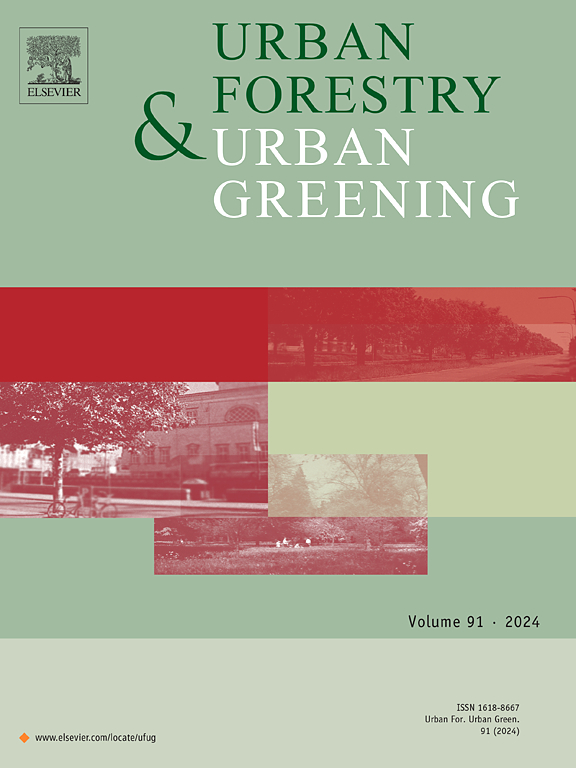Characteristics and influencing factors of taxonomic and functional diversity of butterflies in urban green spaces
IF 6
2区 环境科学与生态学
Q1 ENVIRONMENTAL STUDIES
引用次数: 0
Abstract
Against the backdrop of urbanization posing a significant threat to global biodiversity, the biodiversity of urban green spaces and its influencing factors have become a hot topic in biodiversity conservation. However, most studies have focused on taxonomic diversity, neglecting functional and trait diversity. This study investigated the relationship between butterfly communities and urban green space environmental characteristics by analyzing changes in butterfly taxonomic diversity, functional diversity, and traits. We selected 80 urban green spaces in Hefei, Anhui Province, China, and conducted sampling and recording of butterfly traits for one year. Based on the understanding of butterfly taxonomic diversity and trait differences, we explored the effects of environmental characteristics on butterfly taxonomic diversity, functional diversity, and functional traits using methods such as generalized linear regression models, redundancy discriminant analysis, and environment matrix-trait matrix linkage analysis. During the one-year survey, we recorded 4822 butterflies of 55 species. These butterflies were mostly small to medium in size, with a long flying duration, multivoltine, polyphagous, and overwintered as pupae. The diversity and traits of butterflies in park green spaces were significantly higher than those in residential and street green spaces, with little difference across different urban rings and regions. Nectar plant abundance and distance from the city center, and area of plot were important factors influencing butterfly taxonomic and functional diversities. Butterfly communities were positively affected by spontaneous nectar plants and low-intensity management. Finally, we recommend that to create favorable butterfly habitats in urban areas, considering relevant traits such as life history, behavior, and ecological characteristics of butterflies, and providing diverse habitats to maintain population dynamics are necessary. Additionally, strategies should include increasing the diversity of food sources in urban green spaces, increasing the proportion of larval host plants, promoting low-intensity green space management, and using natural meadow greening forms.
求助全文
约1分钟内获得全文
求助全文
来源期刊

Urban Forestry & Urban Greening
FORESTRY-
CiteScore
11.70
自引率
12.50%
发文量
289
审稿时长
70 days
期刊介绍:
Urban Forestry and Urban Greening is a refereed, international journal aimed at presenting high-quality research with urban and peri-urban woody and non-woody vegetation and its use, planning, design, establishment and management as its main topics. Urban Forestry and Urban Greening concentrates on all tree-dominated (as joint together in the urban forest) as well as other green resources in and around urban areas, such as woodlands, public and private urban parks and gardens, urban nature areas, street tree and square plantations, botanical gardens and cemeteries.
The journal welcomes basic and applied research papers, as well as review papers and short communications. Contributions should focus on one or more of the following aspects:
-Form and functions of urban forests and other vegetation, including aspects of urban ecology.
-Policy-making, planning and design related to urban forests and other vegetation.
-Selection and establishment of tree resources and other vegetation for urban environments.
-Management of urban forests and other vegetation.
Original contributions of a high academic standard are invited from a wide range of disciplines and fields, including forestry, biology, horticulture, arboriculture, landscape ecology, pathology, soil science, hydrology, landscape architecture, landscape planning, urban planning and design, economics, sociology, environmental psychology, public health, and education.
 求助内容:
求助内容: 应助结果提醒方式:
应助结果提醒方式:


